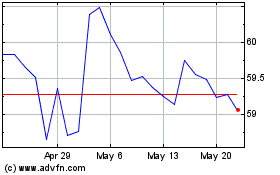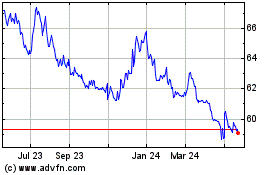The recession had hit hard the Japanese economy with risk-averse
investors avoiding volatile assets like stocks. However, the
economy’s fate seems to have changed ever since Prime Minister
Shinzo Abe came into power after the mid-December elections.
The once struggling Japan economy, under Prime Minister Shinzo
Abe, has seen asset prices shoot up, largely thanks to attempts to
end deflation and weaken the yen. The Nikkei and broad Japanese
stocks are roaring to multi-year highs as Bank of Japan (BOJ)
continues with its aggressive monetary easing policy.
In fact, in an effort to curb deflation and further weaken the
yen, BOJ recently disclosed another plan which was much more
aggressive than expected. This pushed the market and stocks
into bullish territory (DXJ--Best ETF to Play the Japan
Rally).
BOJ’s New Plan
The BOJ entered into a new era of monetary easing, which
included a huge inflow of money into the financial system that has
suffered from very low levels of spending and borrowing. The
central bank revealed its plan to expand the money supply and
achieve the 2% inflation target within a span of two years.
The BOJ's plans include buying $530 billion a year in government
bonds. The BOJ embarked on this plan with an intention to keep
interest rates low.
This will eventually spur spending and borrowing in an economy
which has suffered from stumpy business activity and low levels of
consumer spending. The central bank has also unveiled its plan to
buy riskier assets such as exchange traded funds and real estate
trusts.
The impact of this stimulus package plan by BOJ on the market is
quite evident in the moves of Japanese Indexes and stocks. In fact,
Nikkei soared to levels not seen in the last four years, and is now
up 25% since the start of 2013.
At the same time, Shinzo Abe appears to be quite successful
another front, namely in the depreciation of the yen. The measures
taken by the bank to ease monetary policy resulted in further
weakness in the yen (Japanese Yen ETFs: Any Hope in 2013?).
The Japanese yen has tremendously declined against the U.S.
dollar and euro in the past four days, and indeed over the past few
months as well. Furthermore, many expect this trend to continue far
into 2013 as well, suggesting more pain could be ahead for this
currency.
While the yen’s sharp decline has fueled the surge in Japanese
stocks and ETFs, the impact on The CurrencyShares Japanese
Yen Trust (FXY) has been
just the reverse. The fund has slumped to the extent of 14% in the
year-to-date period on account of the weak yen.
FXY which has been designed to provide exposure to Japanese yen
is the worst performing ETF in the developed market currency ETF
space this year. Moreover, no better performance can be expected
out of the ETF going forward as the yen is expected to further go
down in BOJ’s attempt to stir up inflation and aid the economy.
FXY manages an asset base of $141.1 million and trades at volume
levels of more than 1 million shares a day. The fund charges a fee
of 40 basis points annually.
On the other side of the coin, the depreciation of the yen has
turned in favor of an export oriented economy like Japan. Japan
relies more on exports for growth and the slide in the yen has
provided a boost to the nation’s export. A weaker yen makes their
products more competitive on the global stage shooting the profit
margins up for these key businesses (Q1 ETF Asset Report: Japan
ETFs Reign).
In order to tap this growth in basket form investors should turn
to small cap Japanese funds as a way to play a recovery in the
world’s second largest economy, seeking exposure to local economies
while avoiding mega cap stocks.
Below, we highlight some of the key details in the small cap
Japan ETF space for those looking to make an allocation to the area
for their portfolios:
WisdomTree Japan SmallCap Dividend Fund
(DFJ)
For better access to Japanese markets, investors can look to
invest in small cap securities of Japan through DFJ. This is
best suited for Japan-focused investors seeking to invest in
dividend paying small cap firms (For Japan ETFs, Think Small
Caps).
DFJ is the most liquid small cap fund with the highest trading
volume and assets under management in the small cap space. It
includes firms in its holding based on annual cash dividends
paid.
The ETF manages an asset base of $187.3 million and is home
to 482 small cap securities. Industrials, consumer discretionary,
financials, and materials enjoy double-digit allocation in the
fund.
The fund’s performance has been quite remarkable in the
year-to-date period delivering a return of 11.56%. The fund charges
a fee of 58 basis points annually.
iShares MSCI Japan Small Cap Index Fund
(SCJ)
This ETF tracks the MSCI Japan Small Cap Index which is a
diversified benchmark of companies domiciled in Japan. The product
manages an asset base of $60.5 million and holds over 724
securities in its portfolio.
The fund puts just under 6.24% of total assets in its top ten
holdings, suggesting virtually no company specific risk. The
product charges 51 basis points a year in fees
In terms of sector exposure, financials and industrials both
take up slightly more than 20% and consumer discretionary round out
the top three with 19.9% of the asset base.
SCJ has returned 15.66% in the year-to-date period.
SPDR Russell/Nomura Small Cap Japan ETF
(JSC)
JSC provides exposure to 388 small cap securities of Japan and
manages an asset base of $70.63 million. The fund charges a fee of
55 basis points on an annual basis. Company-specific risk is not an
issue for this fund and so is concentration risk in the top ten
holdings which stands at a mere 6.24%.
Among sector holdings, the top three are the usual suspects,
namely, industrials, consumer discretionary and financials.
Information technology firms also get double-digit allocation in
the fund. The fund has returned 15.28% in the year-to-date period
(Japan ETFs Stumble, Can They Regain Footing?).
Bottom Line
Shinzo Abe's goals clearly focus on monetary policy easing, debt
financing and considerable spending on infrastructure in order to
back inflation and boost the Japanese economy. However, investors
should note that ample liquidity in the market may result in an
artificial rise in asset prices.
Currently, Japanese ETF investments are looking more interesting
as we move forward in 2013. This is especially true if the current
trend in the market place holds and more gains are seen in Japanese
stocks.
If this continues, any of the small cap ETFs listed above could
make for solid picks. Plus, since much of the focus on Japan has
been on large caps like DXJ and
EWJ, these funds could still be overlooked and
prime choices for investors to play the real story in the domestic
Japanese market.
Want the latest recommendations from Zacks Investment Research?
Today, you can download 7 Best Stocks for the Next 30
Days. Click to get this free report >>
WISDMTR-JP SC D (DFJ): ETF Research Reports
WISDMTR-J HEF (DXJ): ETF Research Reports
ISHARS-JAPAN (EWJ): ETF Research Reports
CRYSHS-JAP YEN (FXY): ETF Research Reports
SPDR-RN SC JAP (JSC): ETF Research Reports
ISHARS-MS JA SC (SCJ): ETF Research Reports
To read this article on Zacks.com click here.
Zacks Investment Research
Want the latest recommendations from Zacks Investment Research?
Today, you can download 7 Best Stocks for the Next 30 Days. Click
to get this free report
Invesco CurrencyShares J... (AMEX:FXY)
Historical Stock Chart
From Dec 2024 to Jan 2025

Invesco CurrencyShares J... (AMEX:FXY)
Historical Stock Chart
From Jan 2024 to Jan 2025
